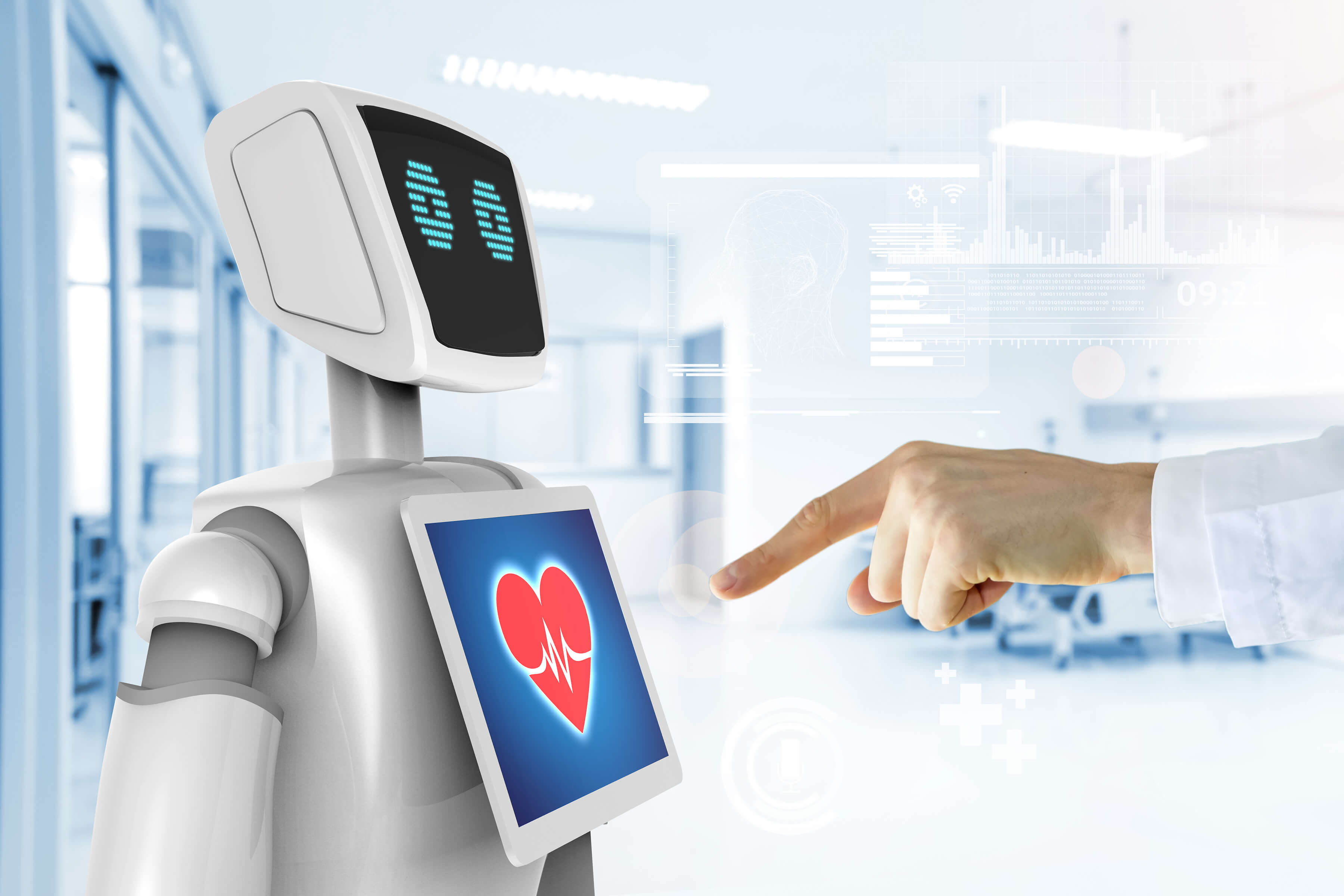What Does it Take to Create IoT-based Remote Camera Control System
This article contains details on what an IoT-based remote camera control system should be and how it should be developed ✅ You can also find helpful guides and tips if you want to have an IoT based remote camera control app of your own.
Mobile technology is still flourishing and businesses are evolving to adapt their products and services to an IoT setup. In this article, we will focus on one niche product that has evolved and embraced IoT, the remote camera monitoring or surveillance system.
Video surveillance systems have transformed from simple closed-circuit TV or CCTV to a mobile, remote-controlled and internet-based solutions.
The evolution of CCTV to relatively inexpensive IoT solutions has made the product more cost friendly to consumers and small businesses. The combination of app mobility and the promise of security has made this service niche one of the profitable opportunities in the market.

What are the advantages of using a remote camera control system
There was a time when only the largest facilities and successful businesses have the resources to set up a camera monitoring system. Now by using a remote camera control system based on the Internet of Things, anyone can set up their own CCTV system. As with any system upgraded by technology, this setup has many advantages over the old CCTV system.
View anytime, anywhere
Using internet connectivity, any authorized user can view and even control the camera remotely. This was a limitation of the old CCTV system, which could only be monitored by an onsite operator or administrator. Using any internet-capable device with a screen, you can login to the remote camera from basically anywhere as long as you have an internet connection.
View using a mobile device
The main driver for this IoT system’s mobility is the capability to access and control the remote camera using any smart mobile phone.
Low CAPEX
The difference in capital expenditure (CAPEX) costs to set up between an old CCTV system and the new IoT remote camera system is like night and day.
Whereas the old CCTV would require intricate local area wirings or a wireless network mesh as connectivity, the IoT version would only use the internet as its access network.
Aside from being low in cost, the internet can also prove to be more resilient than a wired or wireless local network due to the built-in redundancy of the internet.
Low OPEX
The savings on operational expense (OPEX) for an IoT-based remote camera control system can be seen on multiple fronts. First, you don’t need to hire a dedicated operator or administrator. Second, you don’t need to hire a structured cabling expert to maintain the system’s wirings. Third, you can use existing internet connectivity and WiFi system instead of having a separate local area network. Fourth, the end device can be as simple as an inexpensive smartphone.
Multiple types of the end-user platform
The flexibility afforded by a remote camera control system as an Internet of Things application allows it to have multiple types of end-user platforms.
App-based (Recommended)
Developing an IoT-based remote camera control app is the most popular way to establish an end-user platform. The app can present the settings and controls in a user-friendly interface which can greatly decrease the difficulty of using the system. An app can also be easily launched and since all the necessary software is installed or native with the app, it also performs faster than non-native solutions.
Program or desktop based
This is a Windows or Linux-based solution meant to be installed on and used with a laptop or desktop computer. This remote camera control system based on IoT can be encumbered by using a larger end-user device instead of a smartphone. Systems that are program or desktop-based may lack mobility due use of laptops or desktops but these systems have the computing power and storage space. A powerful computer can monitor and control hundreds of IoT cameras and can be equipped with a large hard disk to store all the video data.
Browser-based
This setup is simple on the end user side because it only requires accessing a website and all of the commands and scripts are located on the server side. This setup would mean that the main system resides in a cloud environment or on a remote server configured with remote access.
The end user will only access a website or an IP address to access the monitors and control system. The developer should make the system compatible with all popular internet browsers and must be optimized to run and load quickly since browsers would need to relaunch everything upon each user login.

Features of a remote camera control system
A remote camera control system based on IoT has many features, some of which were adapted from the older CCTV versions, but some were recent developments.
Motion detection
This is especially useful for security camera systems that monitor warehouses or facilities with little or no expected traffic of people. The system will only record videos once motion is detected with the camera’s view. This will trigger the camera to “wake up” and activate all functionalities. If the system is set to watch continually, then any motion will be “tagged” by the system for easy reference during video reviews.
File storage
File storage can be done using an on-premise solution or cloud-based storage. This gives the system flexibility on the number of video files to retain and where to store them. This also allows the system to store additional copies to ensure file redundancy.
File transfer
An internet-based camera can be equipped with a small storage for saving video files if and when the camera is disconnected from the network. This assures that the camera retains captured video files and that nothing is missed. When the camera regains network connectivity, the system will then download the files from the camera for more permanent storage.
IP connectivity
A network based on the internet protocol has robust and almost universal access. Any user with internet connectivity can access the system of cameras. An IP or internet-based camera can also be easily installed if it is WiFi capable.
Secured connection
A remote camera control system based on IoT can be equipped with a user or administrator password for secured access. Each camera can also be connected via a secure IP virtual private network, so even if the system uses the internet - a public network - it appears the system has a dedicated connection.
This is also a way to hide the network from hackers.
Camera movement or swivel
Although this is a common feature in standard CCTV systems, an IoT-based remote camera control system has the capability to control the physical movements of the camera remotely. Some IP cameras even have motorized wheels that allow the user to “drive” the camera around to cover more area.
End-user client app
Using a remote camera control system as an IoT app gives you more flexibility and more security. An end-user client app can be developed in tiers, meaning a higher-level app can be used exclusively by administrators while other users can have a default version of the app. Also, the system is given an extra blanket of security if the app is not available via the public marketplace and is only installed on select devices.

Components of the system and the corresponding cost
Anyone who wants to develop their own remote camera control system app needs to understand the basic components required to create IoT App. This list encompasses the end device, the infrastructure and the core system.
Cloud server
The repository of the surveillance system and also acts as the main storage of video files. This can also be a physical hardware server configured to be accessed remotely.
Cost: This will depend on the project scope and can range from a few hundred dollars up to thousands of dollars. The more cameras, the more Cloud space is needed. As a reference, here is Amazon’s pricing for AWS cloud servers.
IoT control system
This is the main user interface and should contain all the control and settings for each camera and even the entire system.
Cost: Part of the development costs.
Authentication
A user authentication system that filters access to the system and only allows logins of authorized personnel. This is effective protection from hacking and other forms of illegal access.
Cost: Part of the development costs.
Video storage
This can have 3 components, the main storage system keeps all of the video files and is constantly connected and in synch with all the cameras. Backup storage that keeps a duplicate of all or selects video files. Small storage within the camera which can store a limited amount of video in case of network disconnection to the main storage server. Operators can then play the video files that were recorded while offline.
Cost: a micro SD storage, the range is between $10 to $30 each.
IP camera (stationary or mobile)
An IP or internet-capable security camera. Some models are connected via LAN cables, which is convenient since the cable provides electrical power via Power over Ethernet or POE. Models using WIFI as a connection are easier to install anywhere since it does not need network cables, but they will need an electrical power source.
Cost: 1 camera unit ranges between $100 to $200 (Installation included).
Development of the system
This system will require seasoned app developers and the manpower or labor cost should be part of the overall project cost. The cost to develop an app with mobile connectivity function will be higher than normal due to the complexity and number of components needed to be integrated.
Cost: $5,000 up to as high as $45,000.
Use cases for a remote control system for a camera
There are many possibilities and use cases where a remote-controlled camera system can be deployed. Here are four industries and niches that have taken advantage of this technology and can be considered as the major market for this service.
Home security
Real-time home cybersecurity is not anymore exclusive to rich families only. An inexpensive setup can be installed in any house with internet connectivity. You need not worry about the security of your house when you are away.
The Nest Lab app and the Vivint Smart Home are among the more popular home security apps.
Data center security
Secured facilities like data centers require real-time camera security by law or industry standards. A mobile control system will allow operators and executives to view their critical servers anytime and anywhere.
The AVTech surveillance system is a complete camera security system designed for data centers.
Military or Police use
Instead of using precious manpower on watch duties, remote cameras can be installed around their bunkers, office or base. Motion detection can alert personnel of impending danger. Another use case is to mount a remote-controlled camera on top of a moving drone. This can be used as a scout when operating in a dangerous environment.
The tactical surveillance robots from SDR Tactical are wheeled drone vehicles equipped with cameras to scout and survey during military or police operations.
Hospital care
Patient care is another effective use of a remote camera control system based on IoT. Having cameras trained on intensive care patients will allow doctors to monitor their progress constantly. This will also allow doctors to do remote examinations that require a physical view of the patient.
The Video Surveillance company created a complete hospital surveillance system that can be viewed and controlled remotely.
Development timeline
This is a macro view of the factors and processes required to develop a remote camera control system as an Internet of Things application.
Typical development timeline
A feature-rich and internet-based app like the IoT-based remote camera control system can take four (4) to six (6) months to develop.
Overview of the development process
- Planning of business rules
- Gathering of requirements and wish lists from owners
- Gathering and reviewing best practices for remote camera control system
- Checking similar or existing applications to find differentiation
- Lining up of feasible functionality and features
- User Experience and User Interface design
- Front-end or user-end development
- Back-end or server-end development
- Testing and deployment
Concept to MVP
- The concept paper is prepared and contains all the details of the project
- A paper prototype can be prepared showing workflows
- A basic version of the app can be commissioned to show the look and feel
- A working version of the product with all the functions working
Possible causes for delay
- Changing some design features or adding a feature while in development.
- Not doing regular check-in meetings. A recommended methodology is the Agile development process, wherein controls and checks are made to resolve problems early.
- The end user is not providing information and support.
- Developers cannot adapt to technology challenges like API integrations.
- Catching errors too late.
Recommendations for a speedy development process
- If your in-house developers are not experienced enough to create this system or are not familiar with the code, it is recommended that you outsource the project.
- Have parallel development for iOS and Android versions of the system. If a browser, Windows or Linux-based version is needed, then it should also require its own separate team.
- Always require an MVP before the final version.
- During the testing phase, service providers should use an automated testing process to run a batch of tests instead of manual testing simultaneously.
Final thoughts
This is just one iteration of how IoT shapes our future by being present in almost every aspect of modern life. Look closely and you will find that almost everything has an IoT component or can be integrated with an IoT solution. An IoT based remote camera control system has many current and successful implementations.
But as such, there is still a very large market for this service since IoT penetration is still low and most still use antiquated CCTV systems.
If you need help in developing IoT based remote camera control system or any similar IoT project, please contact us and let us brainstorm your project from the beginning to end which should bring clarity to your big idea. We can then engage and develop your App for you at the quickest and most economical way possible.

